|
Cantata BWV 146
Wir müssen durch viel Trübsal in das Reich
Examples from the Score |
|
Mvt. 2 Chorus | Mvt. 3 Aria [Alto] | Mvt. 4 Recitative [Soprano] | Mvt. 5 Aria [Soprano] | Mvt. 7 Aria (Duet) [Tenor, Bass] |
| |
|
Mvt. 2 Chorus |
|
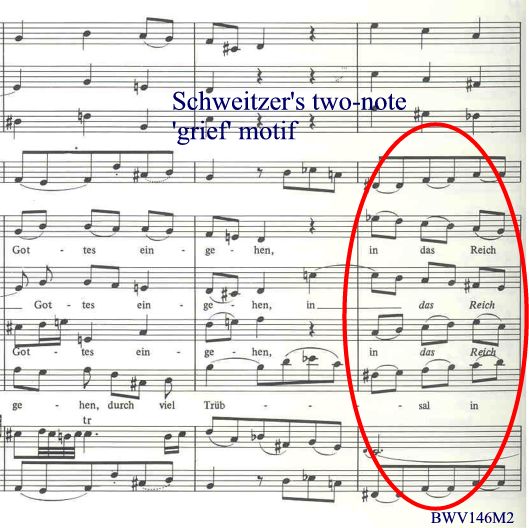
|
|
Example 1 illustrates the 'grief' motif that Schweitzer first pointed out. It consists of two-note phrases. Harnoncourt was the first conductor to heed this phrasing indication by Bach, unfortunately he goes overboard in his interpretation in that the second note is deemphasized to such a degree that its time value is substantially shortened. |
| |
|
Mvt. 3 Aria [Alto] |
|
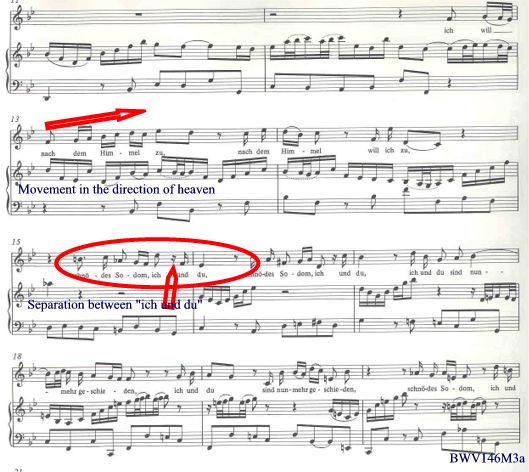
|
|
Example 2 demonstrates two musical pictures: 1) the upward movement toward heaven and 2) the separation by means of a short rest between "ich" and "du." |
|
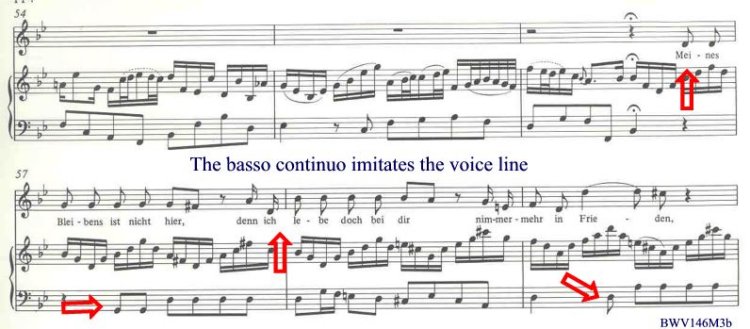
|
|
Example 3 in the second section of the same mvt. shows an interesting imitation of a figure in the voice that is followed by the same figure in the bass line. |
| |
|
Mvt. 4 Recitative [Soprano] |
|
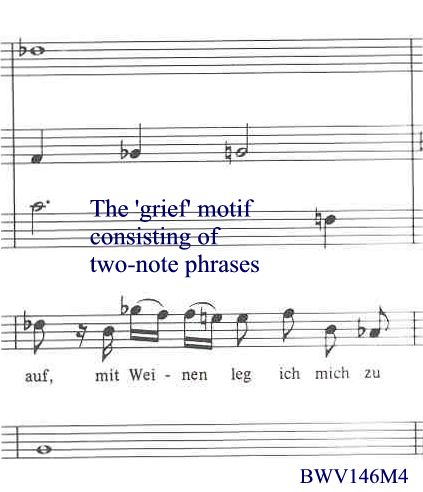
|
|
Example 4 gives another example of Schweitzer's 'grief' motif. This time it is in the recitative. |
| |
|
Mvt. 5 Aria [Soprano] |
|
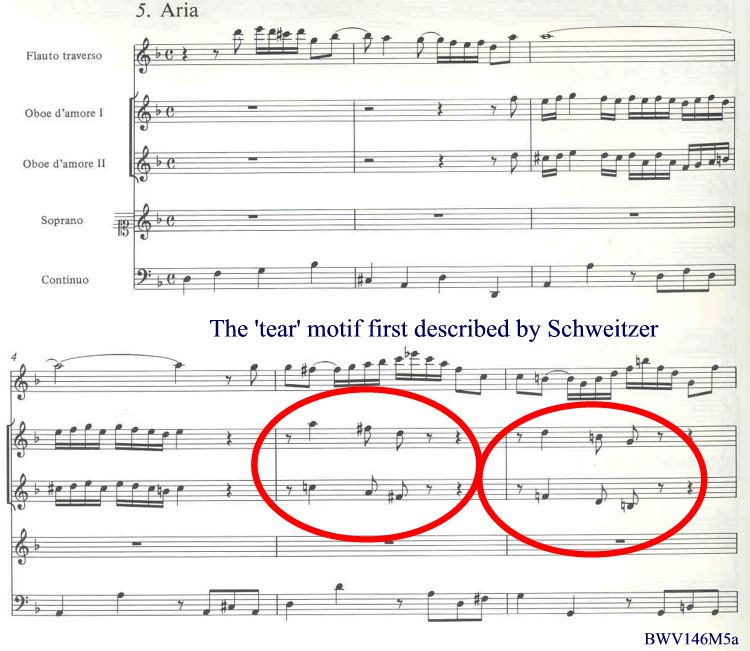
|
|
Example 5 has some examples of the 'tear'motif |
|
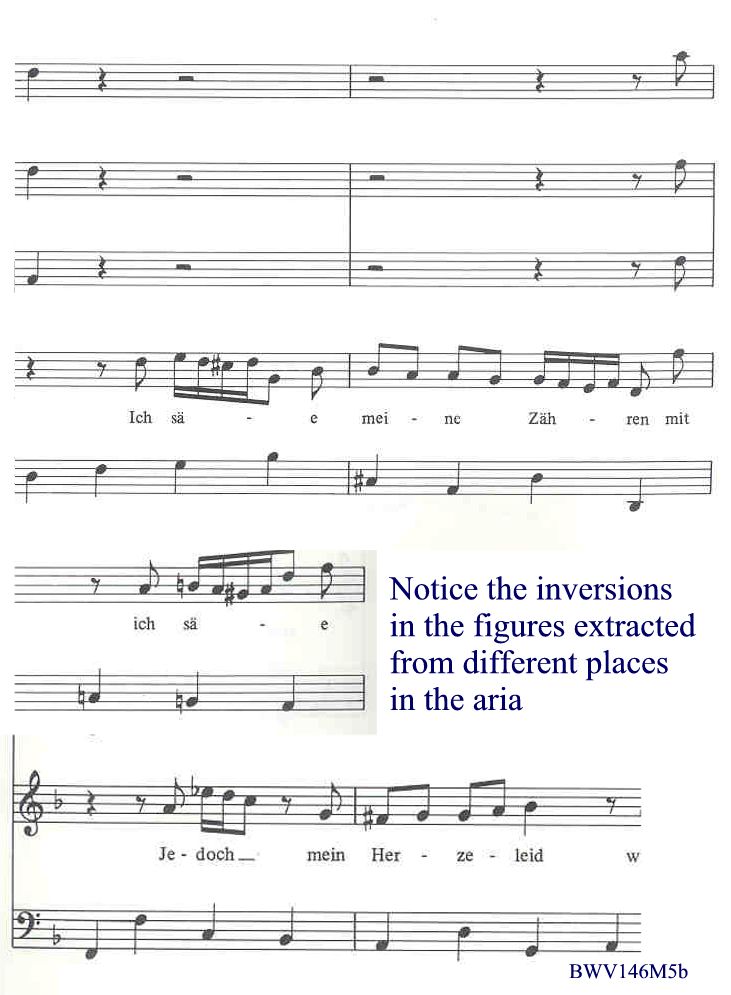
|
|
and Example 6 clearly indicates how Bach worked with this musical figure as he inverts it. |
| |
|
Mvt. 7 Aria (Duet) [Tenor, Bass] |
|

|
|
Example 7: What would you instruct the singers to do here if you were the conductor? Sing the trills as a single trill or a continuous trill? |
| |
|
All snippets from NBA 11.2
Contributed by Thomas Braatz (May 11, 2001) |